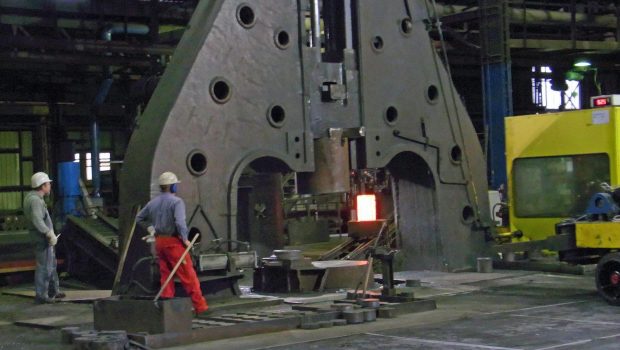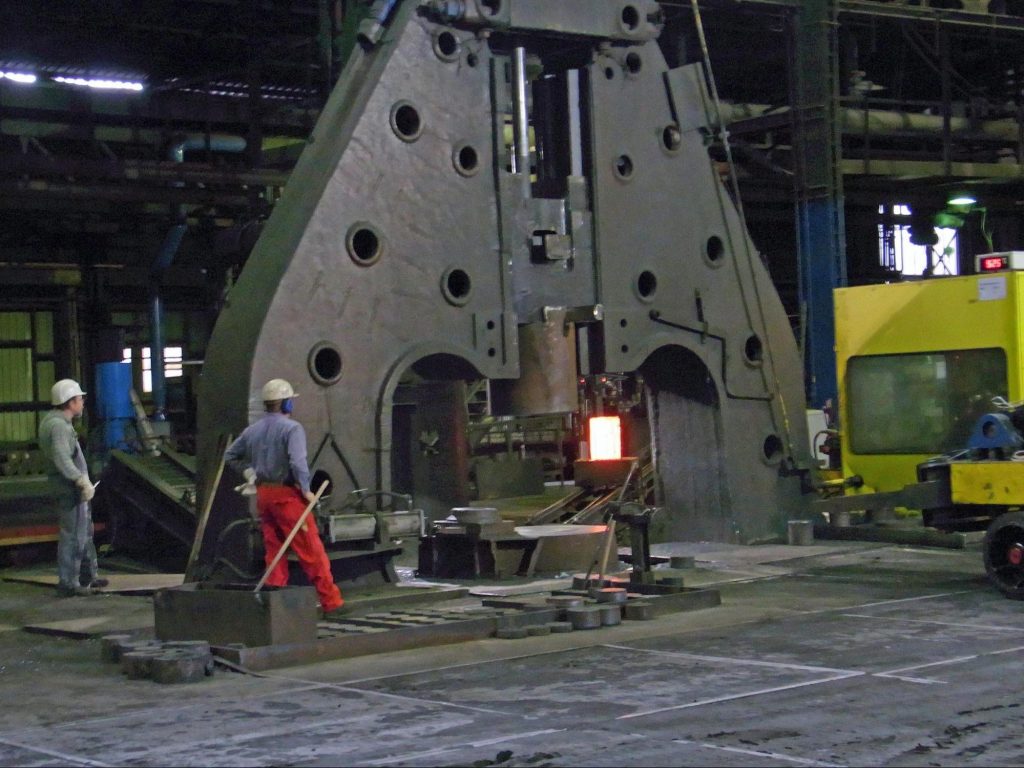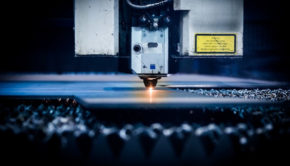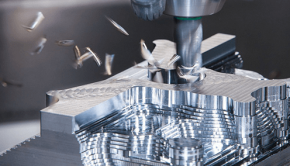Introduction To Hot and Cold Forging
In the world of forging there are two main schools of practice. There is hot forging and cold forging. Even though both production methods differ quite drastically the end result is close to being the same. The hot forging method is a time tested practice that has been around for thousands of years. It was until the industrial revolution that the techniques used in cold forging were developed. Each method has its own advantages and disadvantages below we will go into detail the various aspects that go into each.
Hot Forging
As the name implies this method takes place when the metal is superheated to beyond the point of crystallization. The average temperature in which hard metals like steel are forges is up to 1150 degrees celsius. For metals like aluminum the temperature is closer to 700 degrees celsius. During hot forging the temperature of the metal must be kept above the recrystallization point. Recrystallization is when the metal cools slightly and forms microscopic crystals which in turn are warped when it is reheated. The crystals form on top of each other and the metal is subject to what is referred to as “strain hardening” this means that the metal can become so hard it is unworkable. Another major difference between hot and cold forging is that there are various environmental factors that can influence the final product of hot forging. Reactions when the atmosphere comes into contact with the heated metal may lead to oxidization. Sometimes when an expensive metal such as a super alloy is being forged it will be done inside an environmentally controlled chamber typically that of a vacuum.
Advantages to Hot Forging
There are a few advantages to this method the the most important one is the strength derived from hot forging. Metals that are hot forged have a strong ductility. This means that they have a stronger resilience to tensile stress. This method also has a very high amount of flexibility when it comes to the shapes that products can be made. Having the ability to do fine and unique pieces of work is another strong advantage to hot forging. Another perk is that the finish of the product can be customised to the needs of the customer.
Disadvantages to Hot forging
One clear disadvantage is the hot forging does not allow for the same precision as cold forging. The pieces being made are typically do not have as high a dimensional accuracy. The cooling process is also a concern as hot forged items can warp when they are cooled. The metal may have a variance in the grain structure which may lead to weak points in the product. As mentioned above another draw back is that there may be environmental factors contributing to possible problems during the hot forging process.
Cold Forging
Cold forging is not exactly the best description of the process as the temperatures of production are usually at room temperature or slightly below. Unlike hot forging this process is done below the recrystallization point and does not have the same concerns about strain hardening as mentioned above. Cold forging is especially useful for metals that are less dense such as copper or aluminum. Cold forging also allows for a more of a production line style of operation where multiples pieces can be worked on as they are systematically pushed to the various forming machine and dies. The most common form of cold forging is called “impression die casting”. This is where a piece of soft metal such as aluminum is virtually hammered through a fixed die. Even though most of the process is “cold” there is a final heat treatment where the metal is heated to a certain point and left to cool. This process is called tempering and it strengthens the metal.
Advantages of cold forging
The main advantage to cold forging is the operating cost is significantly cheaper. Another aspect that leads to it being cost effective is that very little work needs to be done for finishing the surfaces. This method also has a lot less waste as it is a very precise way of forging. The production rates for cold forging are also a lot higher and more predictable. These reasons along with a having a long die life make this a prefered method among production companies.
Disadvantages of cold forging
Cold forging is a great means of saving money however the scope of projects are limited due to the means of shaping the metal with heavy machines. Customized metal shapes are very difficult to do and often are not possible with the cold forging technique. Metals also do not have the ductility of metal produced is the hot forging method. This means that is shapes and products where strength is a concern this may rule out the cold forging method.
Conclusion
Both ways of forging have their own advantages and disadvantages. Hot process is very versatile however costly and sometimes the end result may be defective. The cold process is great for making several of the same type of shapes fast and cheap however the depth of product variety is very limited compared to the hot process.
About the author:
Hopefully you have enjoyed this introduction to forging methods by author John Hawthorne. If you are interested in finding out more about forging and for more of John’s writing including this articles inspiration check this out.

















One Response to Introduction To Hot and Cold Forging